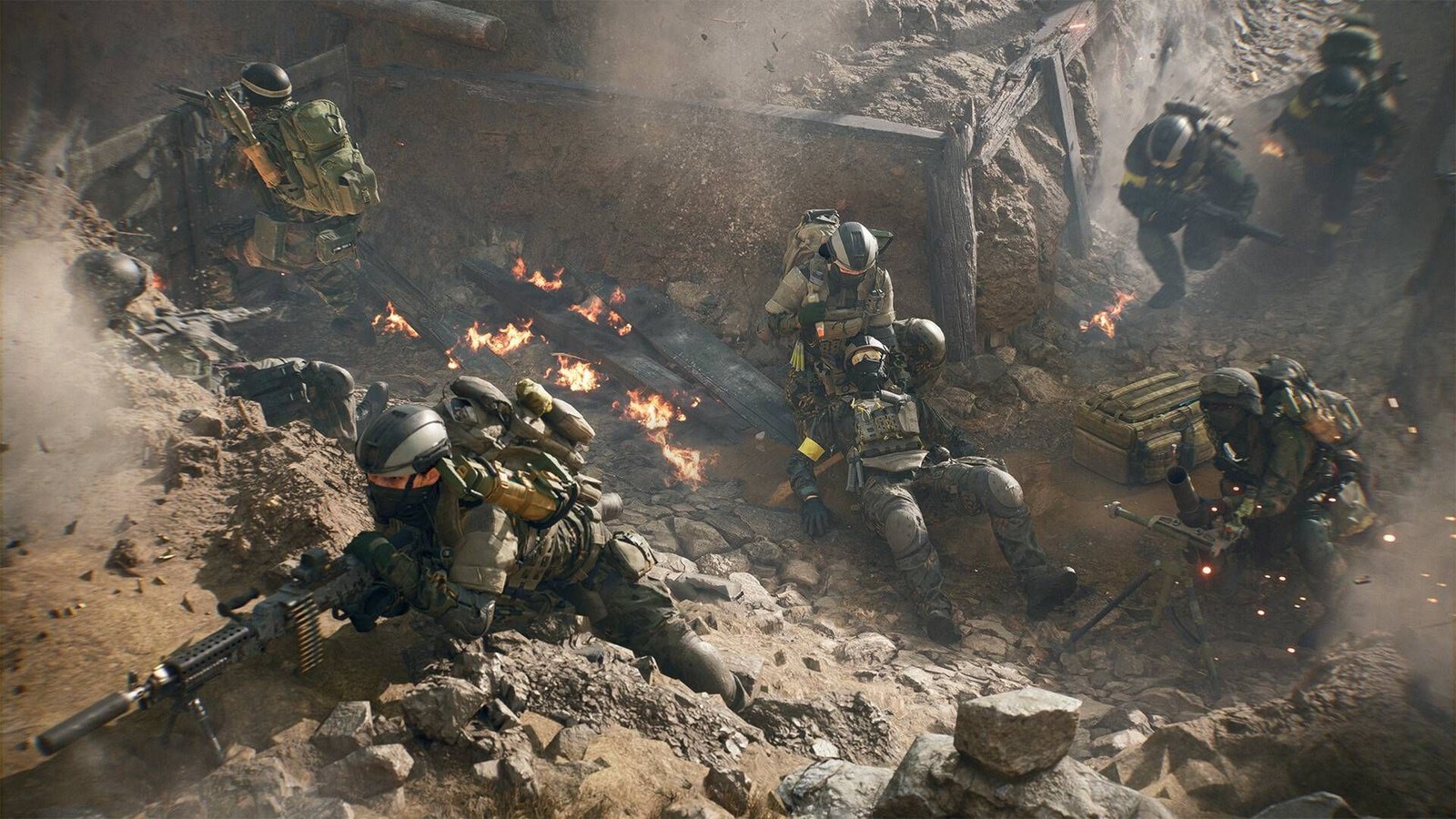Aggro Dr1ft Review
This review is based on a screening at the 2023 Venice International Film Festival.
Aggro Dr1ft is the kind of movie that will, by design, frustrate much of its audience. Its Venice Film Festival screenings have seen constant streams of walkouts during all of its 90 minutes – but if you’re attuned to the peculiar wavelength of the latest film from director Harmony Korine, the result is rewarding and unsettling. Korine has himself cast doubt on whether Aggro Dr1ft even qualifies as a film at all, a fear that appears to stem from the project’s formal audacity: It was shot entirely with a thermal camera (think Predator, if the entire movie was seen from the Predator’s POV), and takes nearly all its aesthetic cues from video games.
It’s a hallucinatory death dream at the gates of hell, following a highly skilled assassin named Bo (Jordi Mollà), who speaks in poetic sonnets about his profession, and embarks on a mission to free himself from the nebulous violence consuming his life and keeping him from his family. That description over-simplifies things; it’s like calling Korine’s Spring Breakers a college getaway film. What immediately stands out about Aggro Dr1ft is its unconventional infrared photography, which transforms urban landscapes into psychedelic paintings. The colors morph and flash in different hues, as if the settings on the camera were in constant flux, searching for something within its subjects that it could not find – a soul, perhaps? However, this search has the opposite effect; it renders the human form uncanny and formless. Human beings become instantly dehumanized. Facial features are lost, but details stand out all the more, like crucifix necklaces, or a cold blue machete being grasped by a red or yellow body bleeding out and slowly losing its warmth.
This loss of detail is a key part of its aesthetic. Like a negative image used for an abstract flashback or memory, it forces the brain to actively parse the meaning and shape of things – it makes watching and interpreting the film a more active, perhaps even a gamified process – but the formlessness also makes each human being resemble a video game character. When Aggro Dr1ft’s first bit of gnarly violence unfolds, and a hellish demon appears across the sky, matching each of Bo’s movements, it feels as though this world we’ve been dragged into is connected to a phantasmagorical virtual reality, a dimension where these characters are somehow linked to terrible forces.
Ski masks become symbols of ritual, and demonic horns spawn atop them. If these ideas had been filmed and rendered traditionally, they’d look positively goofy, but the thermal imaging simultaneously flattens and reveals. It allows both live action and GCI elements to blend more seamlessly together, while transforming them into physical manifestations of thought, theme, and morality. What we see on the screen isn’t just a vividly, strangely colored version of our reality, but rather a reality in which people’s insides can be glimpsed. Sometimes this means blood and bone, but in the world of Aggro Dr1ft, it also means biomechanical body parts, and designs like flowers or skulls, which immediately establishes a simple dynamic between Bo and those around him. Practically every character he meets can be neatly sorted into friend or foe, but no one in the film really feels like a person — which is to say, a complete person.
Their movements all appear to be enhanced by higher frame rates. Their gestures are robotic, but exaggerated. Their lines – almost all of which are ADR’d – are tedious, expository, and delivered in stilted fashion. (Mollà often distinguishes his allies from his enemies in cacophonous voiceover that competes with the creeping synths and booming brass of the film’s thundering score.) Even the movie’s primary antagonist, a demonic thug who seems to sprout angel wings at random intervals, speaks in catchphrases, and continually repeats a humping motion, like a taunt; he’s a Grand Theft Auto gang leader spliced with a Final Fantasy boss. These other characters are, in essence, NPCs, or at least that’s how Bo perceives them through his deeply disturbed perspective. He’s someone who views violence and death as a higher calling that he’s both drawn to and must reject. The film is pathologically evangelical in its warped conception of guilt and penance, as if it were taking inspiration from the modern American political landscape, in which armed bloodshed is worshiped as much as it’s abhorred; in which religious extremism contorts the mind. At one point, after establishing his own cult – led by his protégé Zion (Travis Scott) – Bo sermonizes about God’s benevolence and the ecstasy of love as a severed head drips blood onto a staircase. It’s fucking hilarious.
The movie’s primary antagonist is a Grand Theft Auto gang leader spliced with a Final Fantasy boss.
In this societal context, filtering Aggro Dr1ft through a gaming lens becomes its own form of cultural satire. Video games have long been blamed for mass shootings and other violent outbursts (no such connection has ever been found). But Korine, in essence, completes the feedback loop by conceiving of a video-game-like piece of media – a movie for all intents and purposes – as a living entity, and an evil one, having seemingly absorbed all the malice in modern American society. In its purview, people are just shapes and cultural signifiers: two-dimensional, brainless cows just waiting to be slaughtered. Sometimes you can see what lies beneath their surface – specific mods and “skins,” designed as tattoo-like shorthand – but most of the time, they’re disposable. It’s an individualistic but deeply nihilistic viewpoint expressed in the most existential terms, as Bo waxes poetic about the universe, his family, and his children’s future.
Aggro Dr1ft is a visceral sensory experience that, though it grows occasionally repetitive, always remains fascinating to look at, think about, and even chuckle at for its juvenile sensibilities. Its gimmick may seem simple at the outset, but there are so few films circling the mainstream that not only change our way of seeing, but invert it entirely, forcing us to interpret meaning from the collapse of images, shapes, and textures. Onscreen assassin stories are a dime a dozen, but none have ever been this mesmerizing.











Post Comment